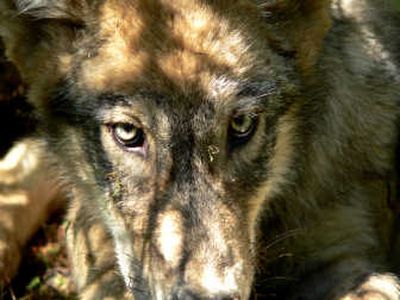Gray wolf no longer federally protected in Northern Rockies

Gray wolves in the Northern Rockies have wandered off the endangered species list and into the crosshairs of hunters.
Endangered Species Act protection was lifted Friday in Idaho, Montana and Wyoming, giving those states the responsibility for managing an estimated 1,500 gray wolves.
And the same day, Idaho Gov. Butch Otter signed a bill allowing ranchers, outfitters and pet owners to kill wolves harassing livestock. The law gives owners up to 72 hours to report wolves they’ve killed after catching them disturbing or stalking animals or livestock.
And in all three states, wildlife agencies are planning fall hunts.
“We manage big game for a living. We’re good at it,” said Steve Nadeau, who oversees large carnivores for the Idaho Fish and Game Department.
The target of government bounties, gray wolves once were pursued with guns, traps and poisons everywhere in North America. They remained plentiful in Canada and Alaska, and a few survivors remained in the upper Midwest. But by the 1930s, they were gone from the West.
Gray wolves, which can weigh up to 130 pounds and range in color from pure white to coal black, were added to the Endangered Species List throughout the Lower 48 states in 1973. But the species has rebounded dramatically since the U.S. Fish and Wildlife Service reintroduced a total of 66 wolves from Canada to central Idaho and Yellowstone National Park in 1995 and 1996. Biologists estimate there are 1,500 wolves in the Northern Rockies, and the species is rapidly increasing its territory, even making inroads into Washington and Oregon.
The Idaho Legislature in 2001 passed a memorial calling for “the immediate removal of all wolves from the state.” But wholesale extermination would bring a return of federal management. So without changing its official hostility to wolves, the state in 2002 reluctantly adopted a management plan that met federal guidelines – promising to maintain at least 10 breeding pairs, or 15 during a three-year period. The state now has an estimated 41 breeding pairs.
“The world is watching, and we know it,” Nadeau said.
Idaho officials plan to let licensed hunters kill 100 to 300 wolves this fall, out of a state population estimated at 800. The state game commission will work out the details in May, but Nadeau said hunting tags will cost $11.50, with a limit of one per hunter.
Even without legal hunting, humans have been the No. 1 cause of known fatalities of the region’s wolves in recent years. Of the 78 documented deaths in Idaho last year, 50 were legal kills – often by wildlife agents – because the wolves were preying on livestock. Another 18 died from other human causes, including poaching.
Hoping to prevent sport hunting, 12 environmental groups say they’ll file a lawsuit in April to restore federal protection. Doug Honnold, an attorney for the environmental law firm Earthjustice, said the region’s wolves won’t be fully recovered until they number between 2,000 and 3,000.
In Washington, meanwhile, wildlife managers Friday issued a reminder that state law prohibits the killing of wolves, even if they’re not federally protected. Federal wildlife biologists once considered reintroducing wolves to Washington’s Olympic Peninsula and North Cascades. Although that idea was abandoned, wolves are sometimes spotted in northeastern Washington, and biologists say it’s just a matter of time before packs are established.